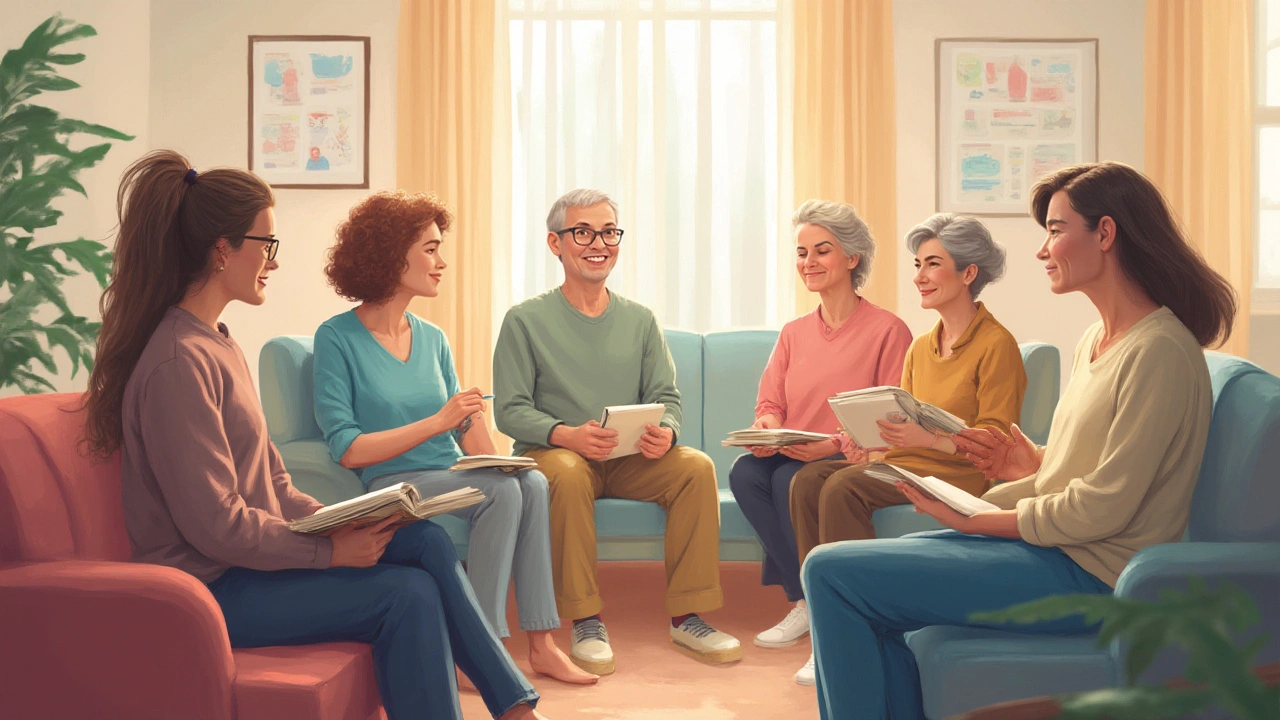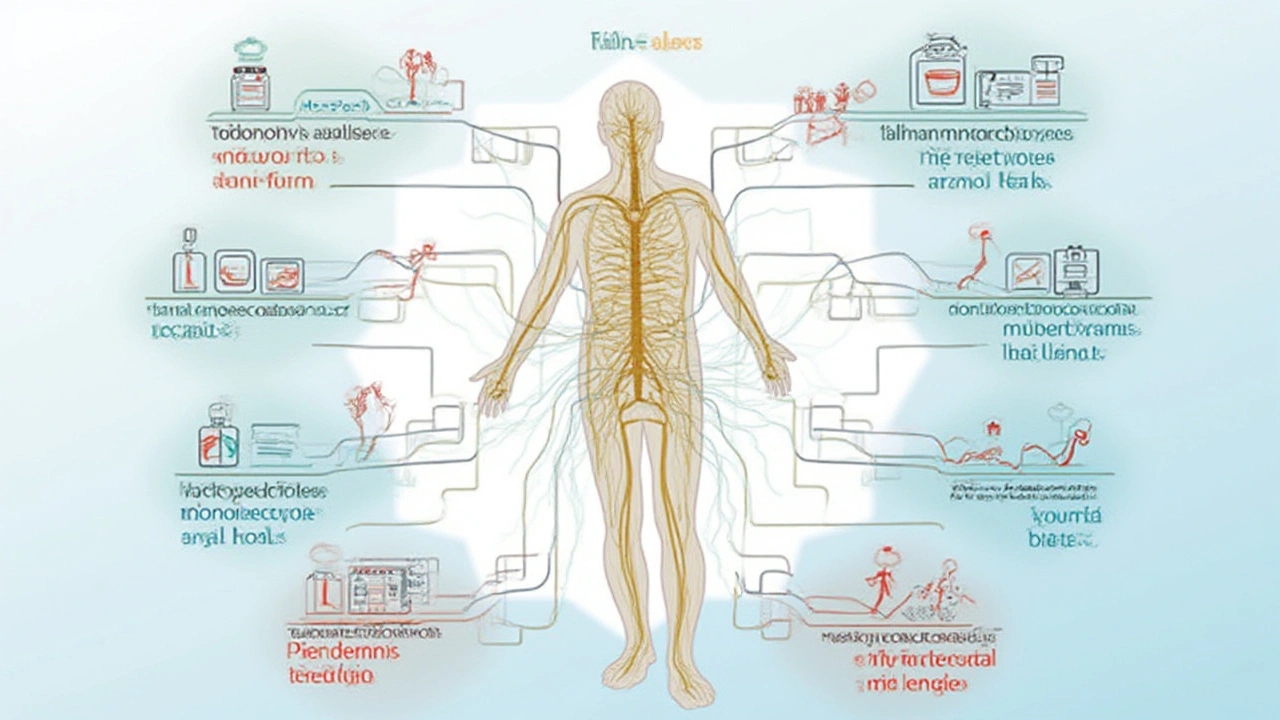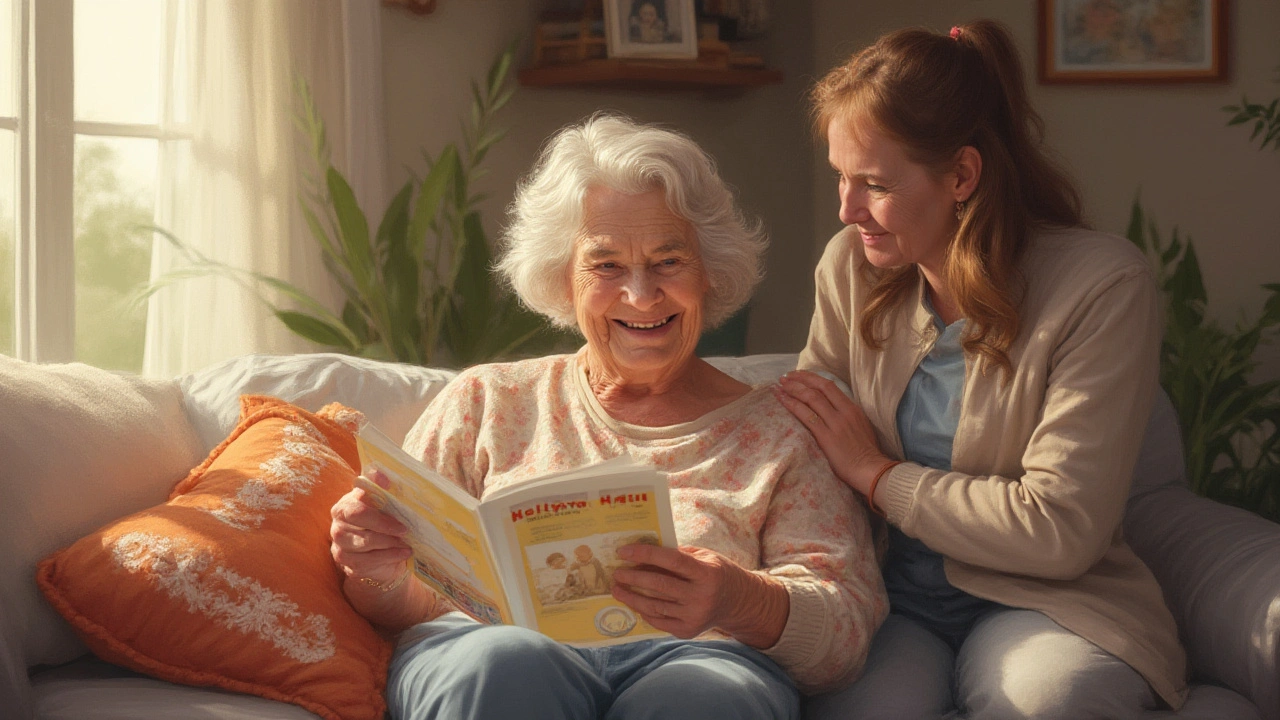Imagine a pain that refuses to leave. Not just weeks, not months, but years after your skin clears up from a shingles rash. Postherpetic neuralgia, or PHN, isn’t your average ache—this is the afterburn of nerves gone haywire, and it can stick around like an unwanted houseguest. For folks who get it, good days may feel like rare wins, and bad days can grind you down. If you, or someone you know, is stuck with PHN, you’re probably aching for answers about what comes next—how long this will last, whether it ever truly ends, and what can actually help in the meantime. The facts are rarely cut-and-dried, but that’s the reality of living with pain that medicine still struggles to fully control.
Understanding the Long Road: Why Postherpetic Neuralgia Lingers
Picture this: you have shingles, the rash fades, but your body doesn’t get the memo. Instead, a burning, stabbing pain starts up—or refuses to stop. That’s PHN. The nerve fibers damaged by the varicella-zoster virus (the shingles culprit) send mixed or exaggerated signals to your brain. Sometimes, even a soft shirt on your back can feel like sandpaper.
Here’s the surprising part—most people with shingles don’t get PHN; it mostly bugs folks over 60, and the risk goes up as you age. Around 10-18% of shingles patients develop PHN, according to the Centers for Disease Control and Prevention (CDC). Not huge numbers, but if you’re in that unlucky group, it sure doesn’t feel rare. The pain can linger for months, even years. Some studies report pain lasting over a decade in rare cases. Why so stubborn? The damaged nerves regrow abnormally or form scar tissue, so even after the initial infection is gone, your pain system stays jammed up.
There’s no magic healing date. Studies out of the Mayo Clinic found about half of PHN patients get better after about one year, but recovery often crawls along. Genetics, how bad your shingle’s rash was, and how quickly you got antiviral treatment all matter. People with severe rashes or delayed treatment have more trouble shaking the pain. Dr. John Oaklander, a Massachusetts General Hospital neurologist, says:
"PHN is notoriously hard to predict—one person's pain may fade in six months, while another's can persist for years. We still don't know why some nerves heal and others don't."
For many, life changes in small, sneaky ways. Wearing certain fabrics is a no-go, sleep turns patchy, and just a breeze on skin feels like torture. If you’re juggling this plus other age-related aches, it’s a lot to handle. The unpredictability itself is a drag—you might hope this week is your last with PHN, and find out next year it’s still hanging around.

Living Through the Pain: Real World Strategies and Surprising Discoveries
So, what do most long-term sufferers actually do? Medicine can help, but there’s no slam-dunk cure. Doctors usually start with antiviral drugs during shingles itself—this lowers the risk of PHN. But if you’re already dealing with nerve pain, typical painkillers like ibuprofen rarely cut it. The toolbox includes anti-seizure meds (like gabapentin), tricyclic antidepressants, lidocaine patches, or capsaicin creams. Even Botox injections are being tested in some pain clinics.
Don’t be surprised if it takes time and patience to find the combo that works for you. Side effects are common, and drugs work differently for everyone. According to a 2022 review in The Journal of Pain, fewer than half of PHN sufferers find real relief with medications alone. That means many turn to non-drug options. Gentle exercise like tai chi, acupuncture, mindfulness meditation, and physical therapy have been reported to ease pain for some folks. There’s even evidence that pets—like my own cat, Nimbus—can make a difference. The simple act of stroking a pet reduces stress hormones, lowering pain perception. When those nerves won’t quiet down, distraction and relaxation become secret weapons.
Support groups, both online and in-person, are a lifeline. It’s easy to feel isolated when doctors and friends can’t "see" what you’re dealing with. Connecting with others who know the drill makes daily life a little less lonely. Sleep hygiene is crucial too. Pain often flares up during the night, so people experiment with positioning, cooling sheets, blackout curtains—anything to boost rest. Some even swear by weighted blankets, though these aren’t for everyone if the touch itself fires up your pain nerves. What works can really come down to trial and error.
Interestingly, some PHN patients notice their pain lessens with certain foods. Omega-3s from salmon, or antioxidants from colorful fruits, are thought to reduce nerve inflammation. No miracle diet, but every little edge counts. Keeping blood sugar in check is vital too, since diabetes doubles the risk of developing nerve pain complications.
All this takes a toll on mental health. Anxiety and depression can follow chronic pain around like a shadow. It’s common, not a sign of weakness. Many pain clinics screen for mood disorders, and some folks benefit just as much from therapy as from medicine. Treating the "whole person"—not just the pain—makes a massive difference.
- Try switching laundry detergents if clothing feels rough—some find hypoallergenic options less irritating.
- Experiment with soft, seamless clothing—yoga pants, loose t-shirts, or tagless attire.
- Consider joining a trial for new pain relief therapies—pharmaceutical companies are always looking for volunteers, especially for stubborn pain like PHN.
- Keep moving, even if it’s gentle. Light walks or stretching prevent stiffness and boost mood.
- Stay curious—ask your doctor about new treatments every year. The field keeps evolving.

What the Future Holds: New Research, Hope, and Realistic Expectations
If you’re hoping for a miracle cure, you’re not alone. After all, who wouldn’t want a reset button for their nerves? The reality is a little more grounded—but there’s genuine reason for hope. Since 2020, there’s been a surge in PHN research. Scientists now use high-powered imaging to spot the precise nerve changes, aiming for targeted treatments. Several new drugs, including non-opioid nerve blockers and gene therapy approaches, are in the pipeline. Some clinical trials use electrical nerve stimulation—zapping specific nerves with gentle currents—to retrain them not to fire off pain signals.
Vaccination is a game changer, especially for folks over 50. The shingles (herpes zoster) vaccine can cut PHN risk by over 90%. Even those who’ve had shingles before should get it, say experts at the CDC. The problem? Not enough people know about it, or they skip their shots thinking it’s not worth it. Trust me, one shot is much easier than years of unpredictable pain.
There’s also a shift in how chronic pain is viewed. In the past, doctors sometimes brushed off PHN as "just something to live with." Now, with more awareness, there’s growing pressure on the medical system to take patients seriously and chase after better solutions. Remote care has opened up—virtual pain management coaches, telehealth visits, and apps that help you track flares offer support, even if you’re housebound.
No one likes uncertainty, but PHN’s course varies so much that doctors can rarely guarantee total recovery. That said, many people do report gradual improvement—nerves can heal, even if slowly, and coping skills tend to get sharper. Staying hopeful is neither naive nor pointless. Sometimes, the weirdest things help—one person might swear by cold packs, someone else prefers heat, and another tries virtual reality pain distraction. There’s no shame in experimenting until something gives your nerves a much-needed break.
If you or a loved one are battling postherpetic neuralgia, don’t write off small progress. Track good days and bad, note triggers and helpers, and share these notes with your care team. Even if today feels rough, the numbers and research don’t lie—the odds of pain fading with time are better than they seem on the darkest days. And if Nimbus, my gray floof of a cat, can get me out of a funk with a single purr, maybe you’ll find your own surprising source of comfort too.


Leo Adi
July 23, 2025 AT 10:00Living with PHN for seven years now. The worst part isn't the pain-it's how people act like you're exaggerating. I once got told to "just meditate harder" by a wellness influencer on Instagram. I laughed until it hurt. But honestly? Tai chi saved my mornings. Not cured it. Just made it bearable. Still wear soft cotton all year. Even in winter.
Emma Dovener
July 25, 2025 AT 06:01As a physical therapist who specializes in neuropathic pain, I’ve seen patients improve with consistent graded exposure therapy-even when meds fail. The key is not pushing through pain, but gently retraining the nervous system. Also, lidocaine patches work wonders if applied correctly. Most patients don’t know how to use them-just slap them on and forget. Wrong. They need 12-hour cycles with breaks. Small details matter.
sharicka holloway
July 26, 2025 AT 21:07I’ve had PHN since 2019. Took me three years to find a combo that worked: gabapentin at night, capsaicin cream in the morning, and my dog sleeping on my bad side. Not glamorous. Not magic. Just mine. If you’re still searching-keep going. It gets better. Slowly.
Sue Haskett
July 26, 2025 AT 23:54Thank you for writing this. So many people think chronic pain is "all in your head"-but it’s in your nerves, your sleep, your relationships, your ability to hug someone without flinching. I’ve tried everything: acupuncture, CBD, nerve blocks, even TENS units. Nothing’s perfect. But the one thing that helped more than anything? Finding a support group where no one says "just stay positive." We just sit. And cry. And share laundry tips. It’s not much-but it’s real.
Alex Hess
July 27, 2025 AT 01:09Typical American medical system waste. You get a vaccine that prevents 90% of cases, but instead of pushing it, you write a 2000-word essay on coping with the consequences. Why not just mandate the shot for everyone over 50? No one needs to read about weighted blankets when prevention is sitting in a fridge at CVS.
Rebecca Price
July 28, 2025 AT 23:39Alex, your comment is the reason people avoid talking about chronic illness. You reduce a complex, deeply human experience to a public health slogan. The vaccine isn’t perfect-it doesn’t work for everyone, and many seniors can’t access it due to cost, mobility, or misinformation. And yes, we need better prevention. But right now, millions are living with this. They don’t need a lecture. They need to feel seen. You’re not helping. You’re silencing.
Emma louise
July 29, 2025 AT 17:27Oh please. "PHN is real"-sure. But let’s not pretend this isn’t just the price of getting old. I’m 72. I’ve had shingles. I didn’t get PHN. Why? Because I didn’t whine. I took care of myself. You people treat pain like a personality trait. Grow up. The world doesn’t owe you comfort.
Mira Adam
July 29, 2025 AT 22:01There’s a philosophical truth here: pain is the only thing that cannot be shared. You can describe it, map it, medicate it-but no one else feels it. And yet we demand others understand it. That’s the tragedy. Not the virus. Not the nerves. The loneliness. We are all alone in our bodies. Even when we’re holding hands.
Gaurav Sharma
July 30, 2025 AT 01:36Shubham Semwal’s comment is correct. Most of you are just lazy. You don’t want to exercise. You don’t want to change your detergent. You want a pill. Medicine has limits. Discipline doesn’t. You are not special. Your pain is not unique. Stop treating it like a badge.
Shubham Semwal
July 30, 2025 AT 21:15LMAO. You think gabapentin works? I was on 1200mg a day for 2 years. Lost 30 lbs. Couldn’t focus. Still hurt. Then I tried cold showers. 5 minutes. Every morning. No meds. No therapy. Just ice. Pain dropped 60%. Your brain is weak. Not your nerves. Train it. Or stay broken.
Melania Rubio Moreno
July 31, 2025 AT 05:09so i had phn and i just started drinking bone broth every day and like… poof? gone? no joke. also i stopped wearing bras. that helped too. science? idk. but i feel better. try it. your body will thank you. 💪
archana das
August 2, 2025 AT 03:04In India, we say: "Pain is the body’s teacher." Not punishment. Not weakness. Teacher. I have seen elders with PHN sit in silence for hours, breathing slowly. They don’t fight it. They listen. Maybe the answer isn’t more drugs. Maybe it’s stillness. Not because we give up. But because we finally learn to hear.
Sam HardcastleJIV
August 3, 2025 AT 22:28The notion that pets reduce pain perception is not empirically robust. While anecdotal reports abound, the placebo effect in chronic pain is well-documented and profound. To ascribe therapeutic efficacy to feline purring is to indulge in sentimental pseudoscience. A more rigorous approach would involve controlled, double-blind studies-preferably funded by institutions that do not rely on viral TikTok testimonials.
Jebari Lewis
August 4, 2025 AT 00:28As a neurologist with over two decades of clinical experience, I must emphasize: the most significant factor in PHN prognosis is early antiviral intervention-within 72 hours of rash onset. Delayed treatment increases long-term risk by 400%. Yet, public health messaging remains abysmally inadequate. Furthermore, the efficacy of non-pharmacological interventions such as mindfulness and acupuncture is supported by Level II evidence in peer-reviewed journals, including the Journal of Pain and Neurology Today. I urge all patients to seek board-certified pain specialists-not influencers. Your nervous system deserves evidence, not emojis.